Farewell to Kirk Wynd: New era as Fife Free Press moves to new home
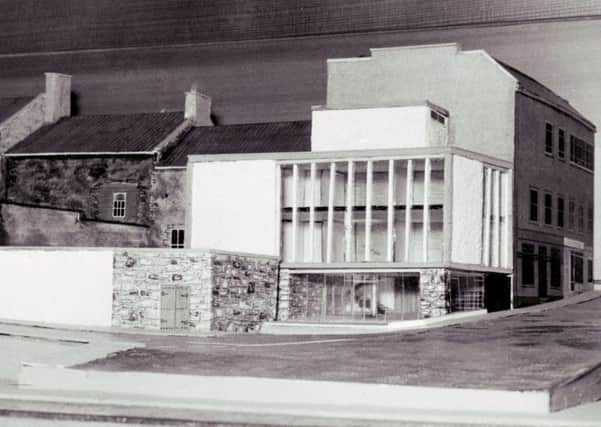

This week we lock the doors at Kirk Wynd for the last time, and head to Carlyle House.
It’s the right move, made at the right time, and for the right reasons, but leaving here will still be a wrench.
Advertisement
Hide AdAdvertisement
Hide AdThis building has been part of so many lives for so many years; a home to generations of wonderful people.
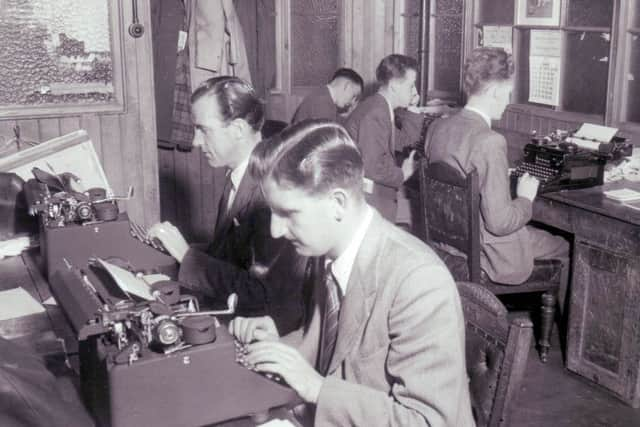

It’s a bit of a Tardis too – what you see on the outside is merely the front door.
The Press used to own the building on the corner of Hunter Street – it’s now flats – where our papers were printed.
It also had the building at the front of Kirk Wynd, which was our reception. To bridge the two, it took over the attic space of the Hunter Hall and built across the top of it a huge office.
Advertisement
Hide AdAdvertisement
Hide AdMy desk is so far up Kirk Wynd I can see across to the main door of the Old Kirk!
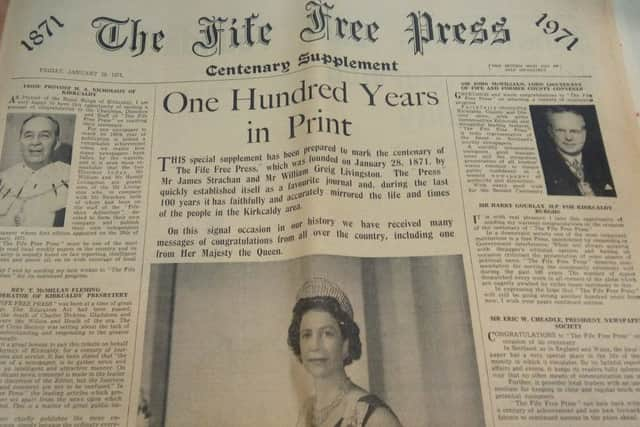

When I first came here in 1986, the top floor was a warren of rooms and wooden floor boards.
It was then gutted and turned into a huge open plan office for the production team, accounts, planning, advertising and photographic.
Reporters were moved downstairs to the first floor. It was as noisy as the floor above them, for management, was sedate and orderly.
Advertisement
Hide AdAdvertisement
Hide AdBeing summoned up to the MD’s office was always a daunting prospect – it felt like hallowed ground!
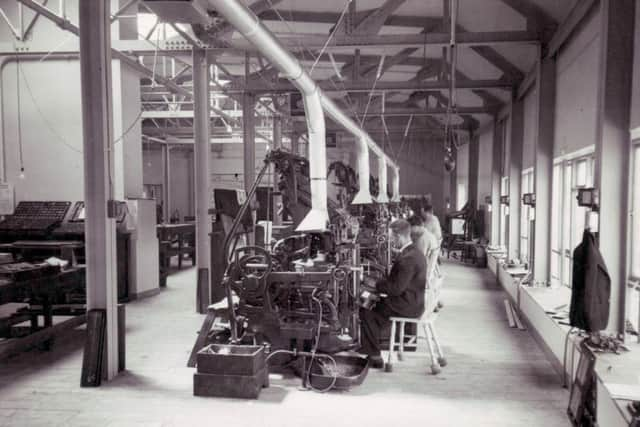

It was a floor that spoke of tradition as well as of continuity; the walls of the MD’s offices featured portraits of all his predecessors, dating through the generations.
My interview for a post as reporter was conducted there – I can still recall Stuart McPherson MD, leaning against the window looking out to the car park where all latecomers were noted.
Years later I returned to the same office to be interviewed for the post of editor.
Advertisement
Hide AdAdvertisement
Hide AdThe personnel had changed – Richard Bell was MD, Colin Hume the out-going editor – but the same diligence was applied as questions were fired.
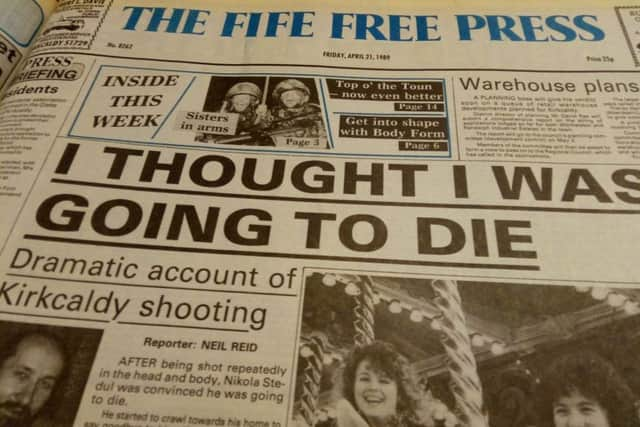

And it’s the people who have made this building so special over the past 50 years.
Kirk Wynd has been the base for hundreds of staff over the years – scribes and snappers, sales teams, production guys, directors, administrators, planners and receptionists.
If these old walls could talk, they’d have you weeping tears of laughter, and sometimes sadness, at the unique, hectic, often chaotic, but always vibrant life in a newspaper office where the week ended when the FFP rolled off the presses up the road at Mitchelston, and the cycle started once more.
Advertisement
Hide AdAdvertisement
Hide AdIf I close my eyes, I can picture Mary Hepburn on reception, connecting calls with an efficiency that put any telephone exchange operator to shame.
And Leon Vyrva as chief reporter, sat behind what felt like a huge desk which looked across a newsroom which included Graeme Scott, Neil Reid, Ronnie Kerr, and, behind a plume of cigarette smoke the late Sandra Watson who wrote under the byline of Helen Wright.
George Watson or John Mackay would drop off my page plans for the following week’s sports pages.
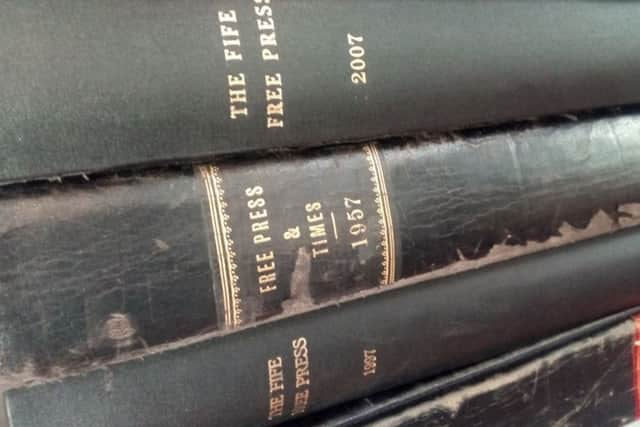

The sound of feet clattering up and down the stairs – all three flights – was a daily soundtrack as sales reps brought in more adverts, and photographers dropped off their prints, and then disappeared once more with a camera slung over their shoulder.
Advertisement
Hide AdAdvertisement
Hide AdThe window would open and freelance journalist, Alan Baillie, would pop in his latest copy in exchange for a story or two – the car park transactions were part of the daily routine of filling our big, broadsheet pages.
People smoked, typewriters clattered and copy was sent to Mitchelston for the production team to set.
And every week, the paper was cut up and each story folded into a tiny envelope, and catalogued in a book that was the reporters’ reference bible for decades until Google was invented.
Skip through the decades and that same filing work was done by previous generations of reporters – John Ramsay, later to become PR man with Kirkcaldy District Council; Mark Leishman, grandson of Lord Reith who went on to become assistant private secretary to Prince Charles; Robin McMillan who carved out a journalistic career in New York, David Whitton who became a Labour spin doctor and MSP ... the list runs the length of Kirk Wynd.
Advertisement
Hide AdAdvertisement
Hide AdThe sports desk has, to this day, a book which lists every single Raith Rovers score, line-up and player information, game by game, from 1961 onwards.
Every few seasons the handwriting changed as it too was passed into new hands – from David Fotheringham to Ronnie Kerr, John Greechan, Gordon Holmes and Neil Crooks.
Clearing out five decades of archives has been a fascinating process.
We have uncovered documents never seen since they were originally filed back in the 1960s, handwritten management minutes sanctioning the launch of our sister paper, the Glenrothes Gazette, training records from the production department from the early 1970s, original plans for our former printing plant at Mitchelston so perfectly preserved they look as if they were only delivered last week, and many pictures from across the decades.
Advertisement
Hide AdAdvertisement
Hide AdThe black and white images capture landmark moments, both in news and sport, and form part of this newspaper, and this town’s history. History is also brought to life by a remarkable inventory from the 1950s and an invoice from Allen Lithographic for the princely sum of £279.
Among the machine parts and associated items, it details one acid pail, rustless steel, and a dragons blood dusting box – a phrase you’d expect to hear reading about in Hogwarts!
It underlines how the production of newspapers has changed, and captures great memories of watching the presses roll at Mitchelston; a noisy, manual job which saw an army of workers clamber in and around the machinery as it thundered at speed.
And as their work was done, a queue of vans would form at the door waiting for the first papers to roll off the press.
Advertisement
Hide AdAdvertisement
Hide AdTechnology changed everything to do with newpapers. This week we also change printing centres from Eurocentral to Dundee – the days of hanging round the press waiting to grab an early copy of the FFP belong to a different era.
Changes have also seen the centralisation, or closure, of many departments.
Photographers were turned freelance – completing a circle which harks back to the late 1970s, early 80s before Bill Dickman came on board as chief photographer and then hired talented folk including David Cruicksanks, Graeme Hunter, Steve McNeil and Bob Mackie.
Advertising has moved across the Forth and, perhaps most painful of all, our reception closed, severing a link between the public and the Press that, in my view, was far more important than any revenue it generated.
Advertisement
Hide AdAdvertisement
Hide AdIt also underlined that 23 Kirk Wynd always was about the people who worked here.
Whoever moved in, out, up, or on, this place had the most special of newsrooms, and was the best place to work whether that was advertising, or admin, production or photography.
October would have marked 50 years here. Instead it marks the end of one era, and the beginning of a new one. We’ll miss this place and all its memories.
This final edition produced out of Kirk Wynd, is dedicated to them all. Good friends, great colleagues. Now we begin a new chapter in the history of the Press. The big move
Advertisement
Hide AdAdvertisement
Hide AdThe Press isn’t moving far ... in fact, we’re only going a few hundred yards up the road!
Carlyle House, which sits behind Fife College, is our new home.
We were very keen to stay in the heart of Kirkcaldy, and the premises were perfect for our needs.
Over the past week we have been busy furnishing them ahead of the big move, and by tomorrow (Friday), all staff will be based at Carlyle House.
Advertisement
Hide AdAdvertisement
Hide AdWe’re planning a special Facebook Live video to show everyone round our new home ... and we’ll be hosting a small gathering in the coming weeks too.
The big move
The Press isn’t moving far ... in fact, we’re only going a few hundred yards up the road!
Carlyle House, which sits behind Fife College, is our new home.
We were very keen to stay in the heart of Kirkcaldy, and the premises were perfect for our needs.
Advertisement
Hide AdAdvertisement
Hide AdOver the past week we have been busy furnishing them ahead of the big move, and by tomorrow (Friday), all staff will be based at Carlyle House.
We’re planning a special Facebook Live video to show everyone round our new home ... and we’ll be hosting a small gathering in the coming weeks too.